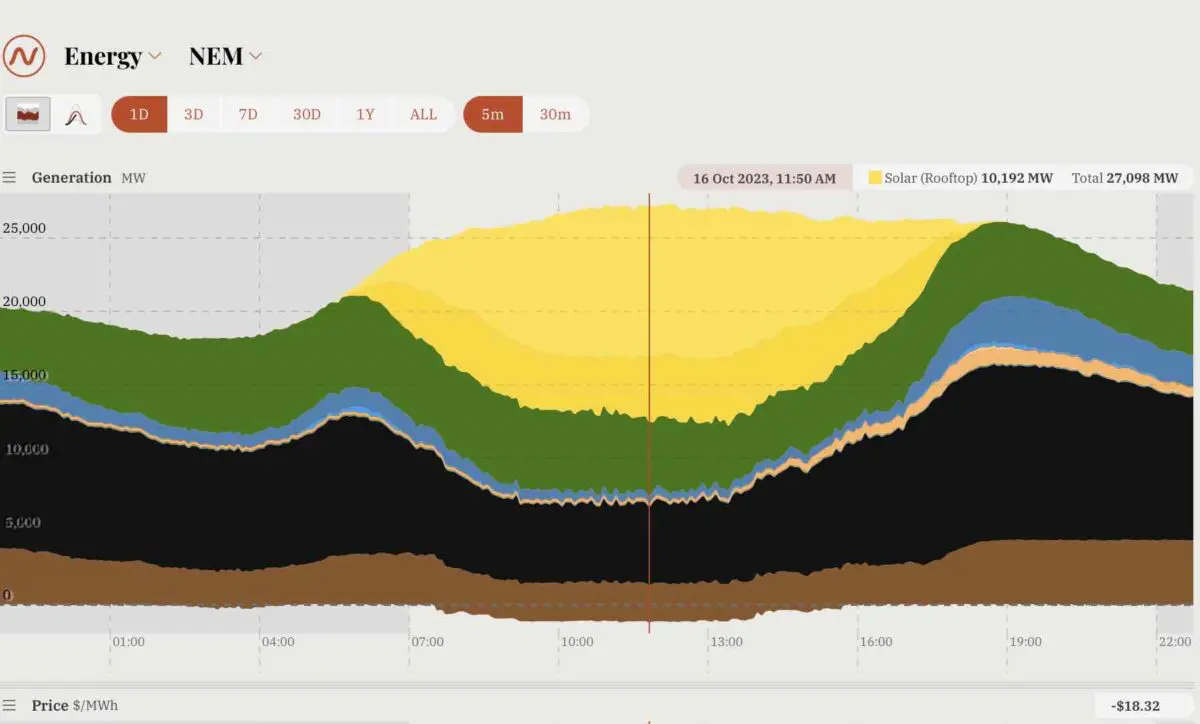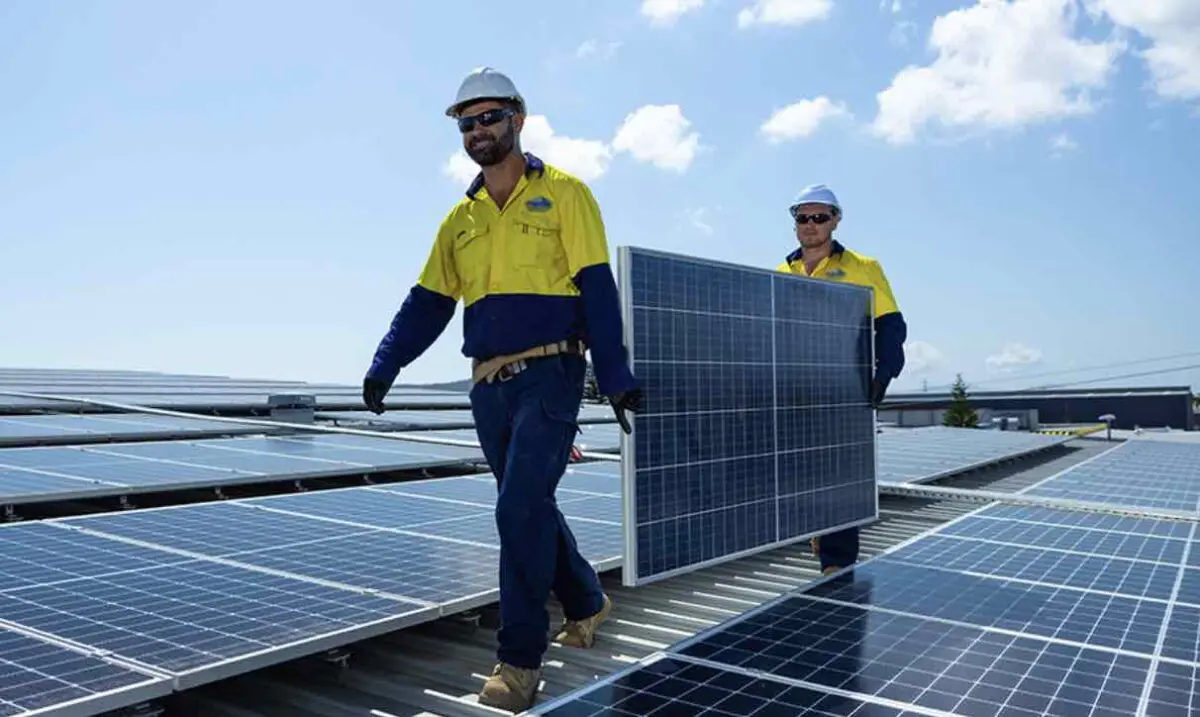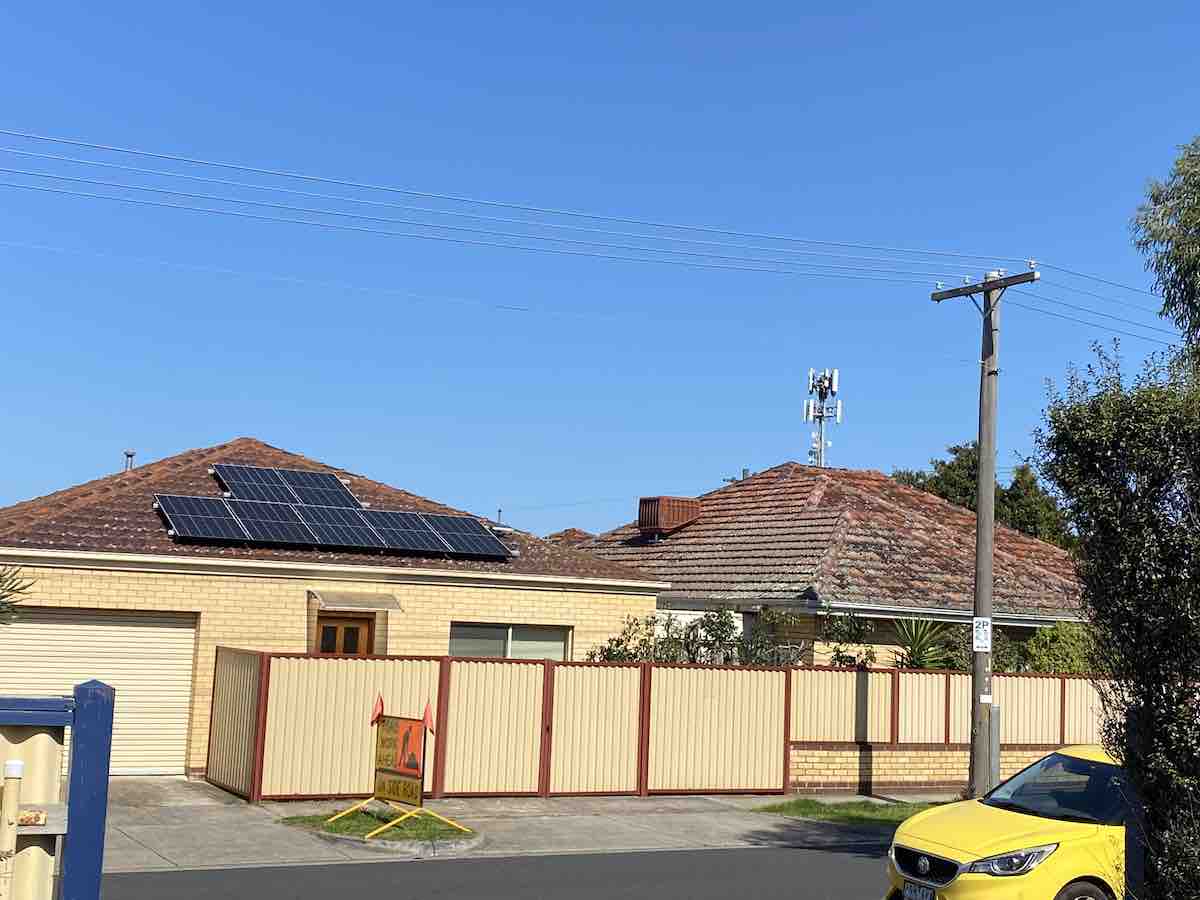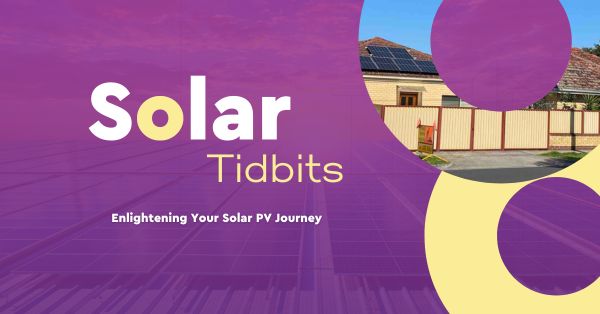Australia’s energy landscape is undergoing a significant transformation, driven by a series of remarkable developments and policy changes. In this week’s edition of Solar Tidbits, we delve into three interconnected articles that together paint a vivid picture of the nation’s journey toward a more eco-friendly and dynamic energy future.
Wind and Solar Power Surge as Fossil Fuels Hit New Lows: 70% of Australia’s Primary Grid Now Renewably-Powered

Photo Credit: OpenNEM
On October 17, a pivotal moment in Australia’s energy landscape unfolded. Wind and solar power reached a remarkable milestone, making up 71.55% of total energy generation in the National Electricity Market. This achievement not only broke previous records but also signified a decline in fossil fuel production, emphasizing the growing shift to sustainable energy.
The data, sourced from GPE NEMLog2, revealed that the combination of wind and solar energy peaked at an impressive 69.98% during a five-minute trading interval, surpassing a recent record. This rapid surge underlines the incredible transformation of Australia’s energy grid in recent years. In contrast to the mere 18.6% of renewable energy contributions five years ago, we now witness a substantial peak, reflecting the nation’s deepening commitment to sustainability.
This remarkable progress extends beyond numbers – wind and solar energy collectively reached an all-time high of 19,811 MW, exceeding the previous record in February. Moreover, the diminishing role of coal in the energy mix was evident, with coal’s share hitting a record low of 27.91% in conjunction with the ascent of renewable energy. This data testifies to Australia’s transition toward renewable energy and its dedication to a more environmentally friendly energy future.
New Milestone Achieved: Rooftop Solar PV Production Surpasses 12GW for the First Time

Photo Credit: Reneweconomy
Australia’s energy landscape celebrated a groundbreaking achievement as rooftop solar PV production exceeded 12 GW for the first time. This milestone, achieved during a five-minute trading period on October 11, marked a significant leap in our renewable energy journey, surpassing the previous record set just weeks earlier.
What sets this accomplishment apart is the substantial contribution of rooftop solar to the main grid’s total demand, reaching approximately 47% during the peak. This underscores the growing importance of distributed solar energy in meeting our energy needs. Instantaneous production peaks were also observed in various regions, including Queensland, Victoria, and Tasmania, indicating a broader trend reshaping Australia’s energy landscape.
With over 20 GW of rooftop solar PV supporting Australia’s main grids, the growth of renewable energy sources is evident. It’s not unusual for rooftop solar to cover the majority of our daytime energy needs, even surpassing 100% in regions like South Australia. As we navigate the evolving energy landscape, rooftop solar PV plays a crucial role in ensuring a sustainable and eco-friendly energy future for Australia.
For a more in-depth exploration of this transformative development, read on.
Rooftop Solar Rebate Changes: A New Era of Double Dipping Allowed

Photo Credit: One Step Off the Grid
Victoria’s Solar Homes program has taken a significant step by allowing, under certain conditions, what some call “double dipping” in solar incentives and interest-free loans. This unique opportunity permits residents to benefit from these incentives once more, particularly if they move to a new property.
Lily D’Ambrosio, the state’s energy minister, announced this development, marking a positive move toward bolstering solar energy adoption in Victoria. The ability for households to enjoy solar incentives upon relocation acknowledges changing homeownership dynamics and the need for sustainable energy solutions across properties.
Additionally, extending eligibility to homeowners with solar systems over a decade old is a commendable move, addressing concerns among early solar adopters with older systems. By offering rebates and interest-free loans for system upgrades, the program encourages the ongoing embrace of sustainable energy solutions.
These changes follow a substantial revision in August, increasing the combined income threshold for rooftop solar subsidies to $210,000 annually, ensuring broader accessibility. Victoria’s Solar Homes program continues to adapt, aligning itself with the evolving solar technology landscape and diverse resident needs. These modifications promise a brighter future for solar adoption in the state, making sustainable energy accessible to more households.
For a more detailed exploration of these recent program changes, read on.
See past solar tidbits here: https://bit.ly/SolarTidbits

